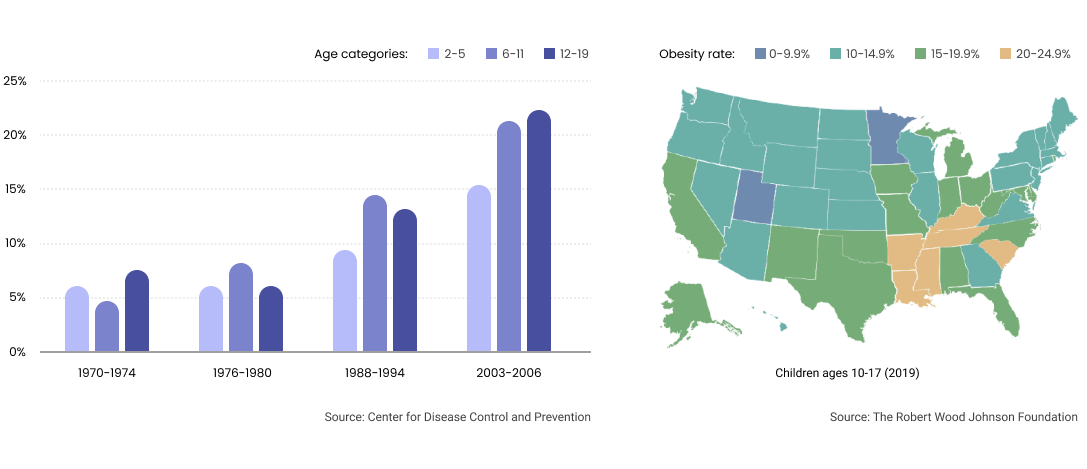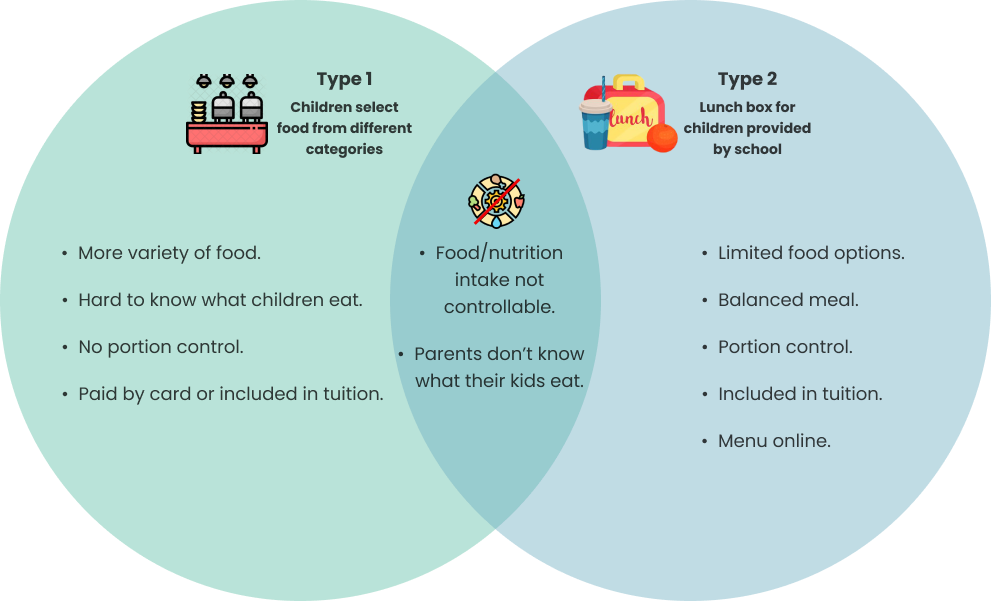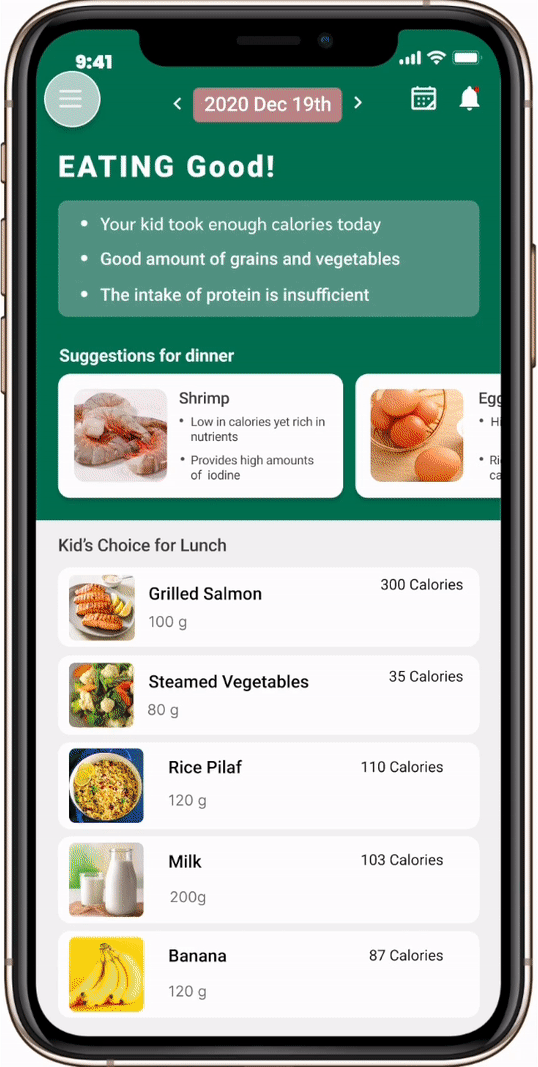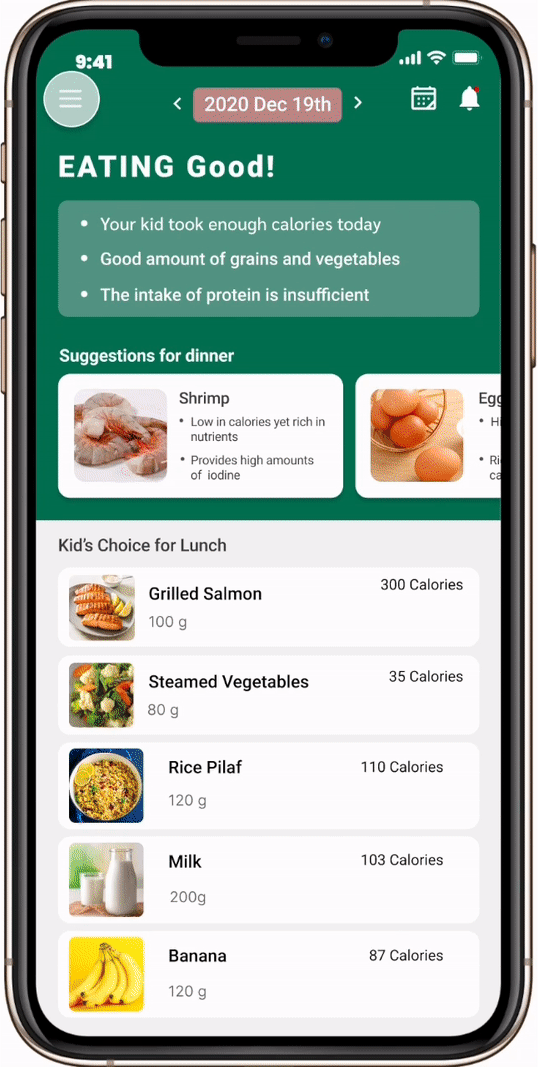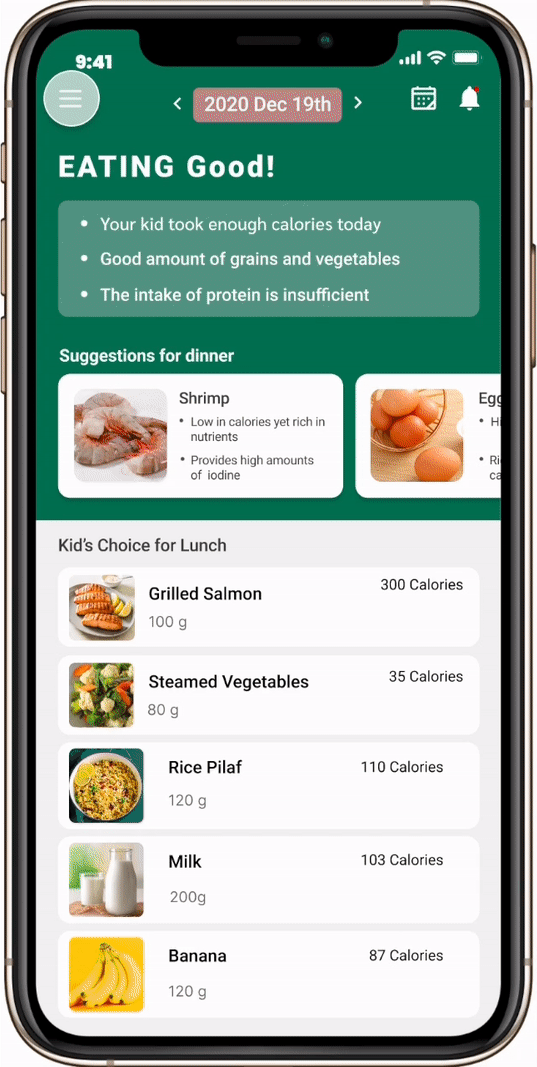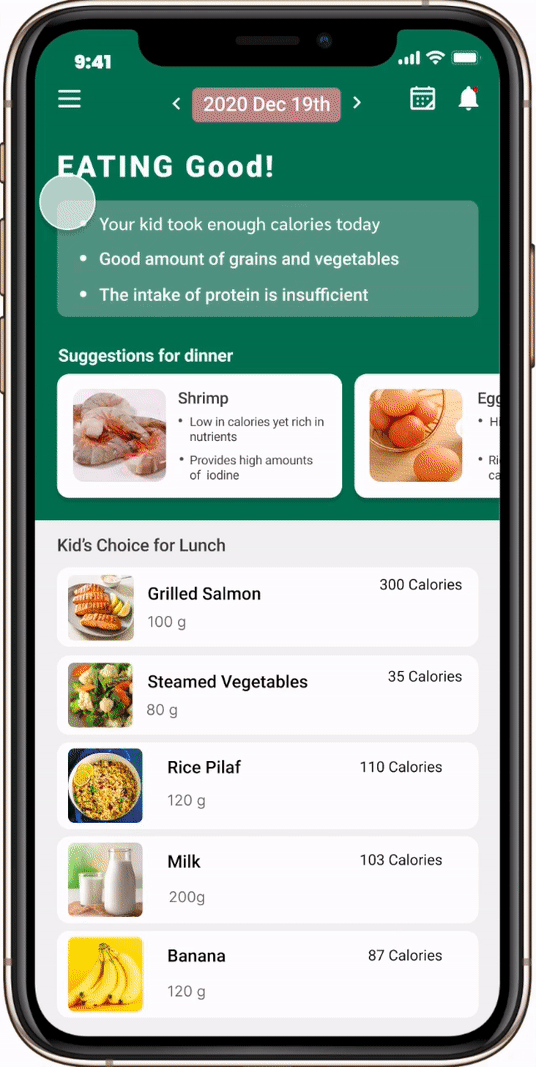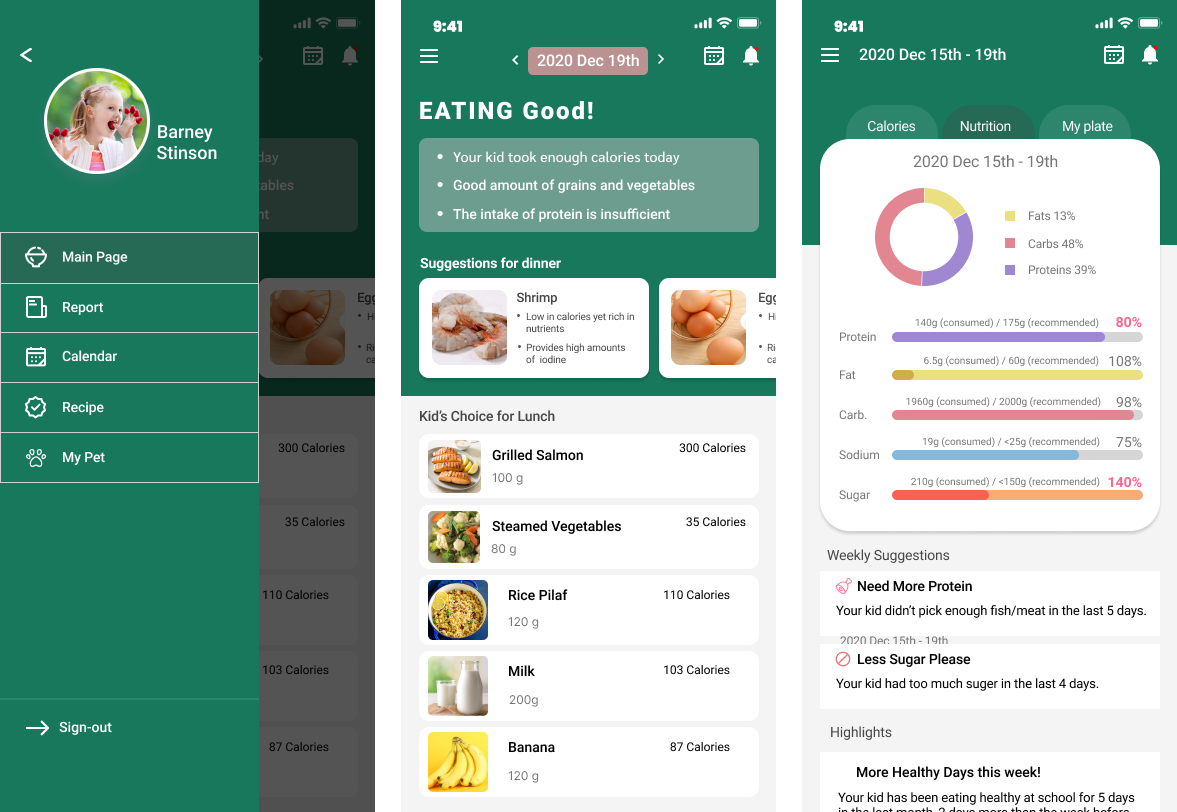Research
Rising Obesity Among U.S. Children and Teenagers
Being overweight or obese increases a child’s risk of poor physical health and is a risk factor for illness and mortality in adulthood. This issue generally results from a sustained energy imbalance, where the amount of energy a child consumes through eating and drinking outweighs the energy they expend through physical activity and bodily functions. Child obesity has become a serious issue since the ’70s. The percentage of children who are obese has been increasing at a high rate. After conducting research, I gathered these key findings:
Roughly 1 in every 6 children has obesity.
School meals have been under increased scrutiny.
The federal government has established guidelines for school meals (MyPlate).
Most children eat lunch at school during the week. That meal is very likely to be something parents cannot control. With that in mind, I decided to take a deeper look at the school lunch system.
There are two main catering systems in most U.S. schools. Each has its pros and cons. However, they share something in common: Parents don’t know what food their kid(s) are eating at school, and no one can ensure that the right amount of food and nutrition is consumed every day. If parents want to find out what food was provided, they need to either call the school cafeteria or go to the school website (if any) to find out.
Competitor Analysis
Food tracker apps have been around for quite some time now. However, it’s hard to find one that is designed for kids only. I researched some food apps on the market.
Competitor apps gave me something to think about, such as the idea of forming a community between schools and parents, so everyone is on the same page.
Persona
To discover more about this topic on a smaller scale, I interviewed two people: a mother and a father from two families.
The interviews gave me a deeper appreciation for how much parents care about their children’s health and what their children eat at school. Based on their experience, some kids cannot remember what they eat, and some kids might lie about what they eat at school because they either didn’t eat well or they ate too much. Teachers and parents don’t communicate enough, and it’s very hard to do so as well.
User Journey Map
With my research learnings, I created a persona that mapped out the user journey of children and parents, including their thoughts and feelings during the process of selecting and buying school lunches.
Pain Points:
Children don’t necessarily know what food is good for them when they pick out their lunch.
It’s hard for parents to know what their children eat at school for lunch. Children might lie about what they ate, or they might forget.
Parents may not know everything about food. They may have blind spots when it comes to educating their children about nutrition.
Ideation
Storyboard
I sketched out a storyboard to begin the ideation and tried to discover some potential solutions.
From this exercise, I decided to focus on keeping track of what food children eat and educating parents about food. I also thought about an issue that is critical during this process: Children need to have some basic nutrition knowledge, so when they pick out food, they can make better choices. However, children have a really short attention span, and they might not take in any of the food education lessons from parents. In order to solve this problem, I decided to introduce a game system in the app, because children learn much faster through playing than hearing and writing. The game will allow children to pick one cute baby monster as a pet. Whatever food the children eat, the pet will get the same thing. If the food selection is great, the pet will grow up faster and stronger. This game takes advantage of children's curiosity and playfulness then encourages them to eat well and learn more about food and nutrition.
How It Works
SKETCH UI
I started to sketch out the basic app structure, which includes how to represent what children ate at school for lunch, a daily and weekly report on food selection, and nutrition intake.
Delivery
Reporting and Overview
After children pick and eat their food at school, the app will generate a detailed report to let parents know how well their children ate. The main information will be what kind of food they ate and the nutrition contents.
Calendar Overview
Parents can also go to the calendar page to find out the overview of the week or the month, so they can adjust the meals at home to balance out the nutrition intake.
Dinner Suggestions and Recipes
Food Tracker will provide some suggestions for dinner, along with recipes based on the children’s nutrition intake over the week.
Badges and Game
Children can see the badges they have earned by eating well. To further encourage children to eat well, the game of raising a pet is introduced. The pet will “eat” anything the children eat. If the children want their pets to grow up faster and stronger, they need to eat better food.
Main Page
Parents can find the answer to three main questions:
What did their children eat?
How much did they eat?
How well did they eat in terms of nutrition intake?
Based on the food that children have at school every day, Food Tracker will generate a report for parents and provide ingredient suggestions for dinner.
Recipes
The recipes Food Tracker provides will show the overall nutrition content of the dishes as well as the individual ingredients, so adjust the total food amount and nutritional profile to make sure their children are getting adequate nutrition.
Profile
Parents can show their children the badges they have earned throughout the week by eating good food, which can encourage children to keep up their good habits. Children love to play games with one another. Food Tracker allows children to adopt a “pet.” Every time the selected food is scanned, the system will “feed” the pet with the same food. Children will want their pet to grow stronger and faster, which will indirectly encourage them to eat more good food.

